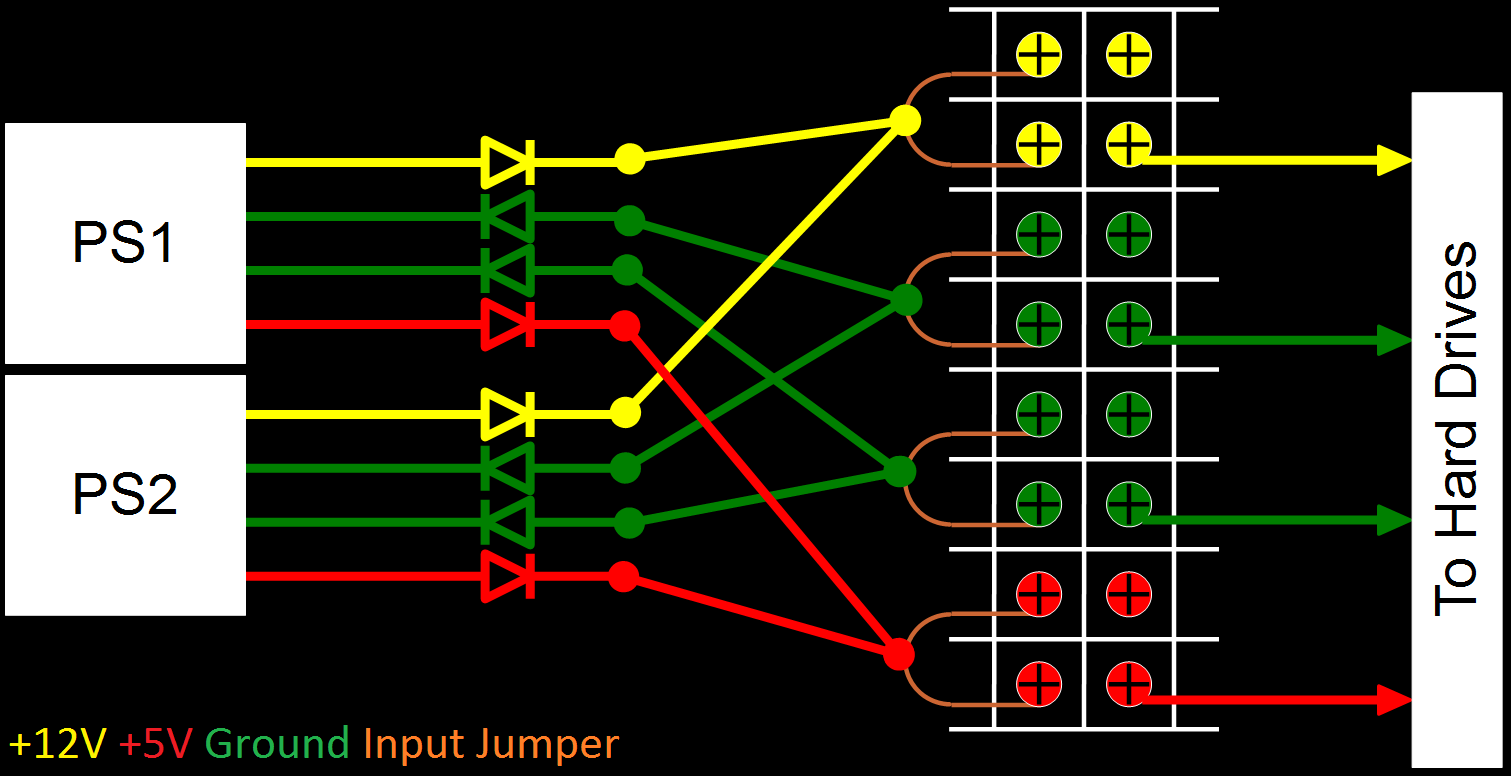I'd like to have redundant power supplies to power an array of four hard drives. Each drive uses 5V at .6A (3W) and 12V at .45A (5.4W), for a total of less than 10W each. The four drives will have data lines to a separate PC which doesn't have the available real estate internally for the four drives, hence the external enclosure.
I gutted a PC chassis, installed a cage to hold the drives, made a custom SATA power pigtail, then connected that pigtail to the output from an eight connection (four pair for this purpose) terminal/barrier block riveted to a PCI slot cover (juuuust the right size). I'm using two standard four pin molex connectors to supply power to the input side of the barrier block. The like wires are joined from each molex adapter to one of each pair of input terminals, and each pair on the input side are jumpered, thus supplying three connections at the same potential. I need the additional connections for fans and such.
As it is now, I've only used one power supply. I need to know how to connect two PSs such that they're both on and supplying power, but at any point if one dies the remaining one supplies power to the drive array. I don't want a standby scenario involving relays because the moment of time it takes to switch the relay may cause data loss. I'm okay with both supplying 50% power all the time. The circuit this machine is on has battery backup, so the likelihood of both dying simultaneously is infinitesimal.
See below for an image of the actual setup
Now to the point of my question. I imagine just tying the like wires together would cause power to feed back (wrong vocabulary?) into a power supply if voltages weren't identical, or when one dies the good one tries to supply current to the bad one. Would soldering diodes on each molex pigtail before the barrier block inputs be suitable to avoid one power supply from feeding current to the other in the event one fails or the voltage fluctuates? If so, how do I select what type of diode to purchase? I can spec a capacitor or resistor, but I've never needed to install a diode in any custom PCB circuitry. See below for proposed schematic.



